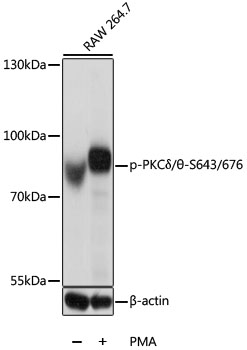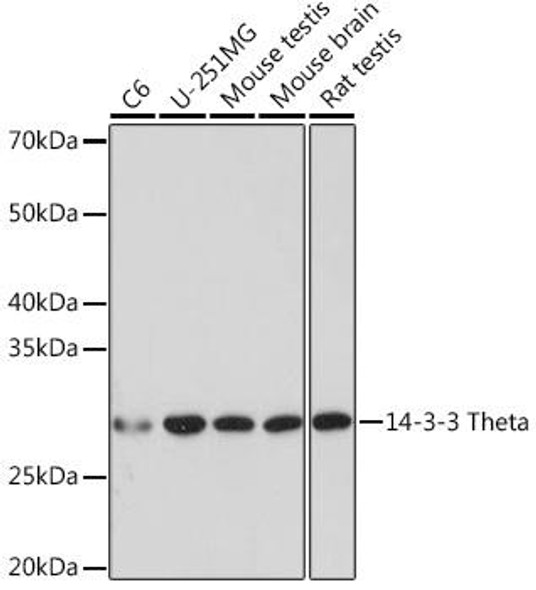Cell Biology Antibodies 16
Anti-Phospho-PKCdelta/theta-S643/676 Antibody (CABP0567)
- SKU:
- CABP0567
- Product Type:
- Antibody
- Applications:
- WB
- Reactivity:
- Human
- Reactivity:
- Mouse
- Host Species:
- Rabbit
- Isotype:
- IgG
- Research Area:
- Cell Biology
Description
| Antibody Name: | Anti-Phospho-PKCdelta/theta-S643/676 Antibody |
| Antibody SKU: | CABP0567 |
| Antibody Size: | 20uL, 50uL, 100uL |
| Application: | WB |
| Reactivity: | Human, Mouse |
| Host Species: | Rabbit |
| Immunogen: | A phospho specific peptide corresponding to residues surrounding S643/676 of human PKCDelta/? |
| Application: | WB |
| Recommended Dilution: | WB 1:500 - 1:2000 |
| Reactivity: | Human, Mouse |
| Positive Samples: | RAW264.7 |
| Immunogen: | A phospho specific peptide corresponding to residues surrounding S643/676 of human PKCDelta/? |
| Purification Method: | Affinity purification |
| Storage Buffer: | Store at -20°C. Avoid freeze / thaw cycles. Buffer: PBS with 0.02% sodium azide, 50% glycerol, pH7.3. |
| Isotype: | IgG |
| Sequence: | Email for sequence |
| Gene ID: | 5580/5588 |
| Uniprot: | Q05655/Q04759 |
| Cellular Location: | |
| Calculated MW: | 77kDa/80kDa/67kDa/74kDa/81kDa |
| Observed MW: | 78kDa |
| Synonyms: | PRKCD/PRKCQ |
| Background: | Protein kinase C (PKC) is a family of serine- and threonine-specific protein kinases that can be activated by calcium and the second messenger diacylglycerol. PKC family members phosphorylate a wide variety of protein targets and are known to be involved in diverse cellular signaling pathways. PKC family members also serve as major receptors for phorbol esters, a class of tumor promoters. Each member of the PKC family has a specific expression profile and is believed to play distinct roles in cells. The protein encoded by this gene is one of the PKC family members. Studies both in human and mice demonstrate that this kinase is involved in B cell signaling and in the regulation of growth, apoptosis, and differentiation of a variety of cell types. Alternatively spliced transcript variants encoding the same protein have been observed. [provided by RefSeq, Jul 2008] |







